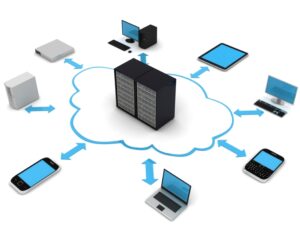Backup and Disaster Recovery
Backup and Disaster Recovery
The methods and procedures for returning a data center to full operation after a catastrophic interruption
Disaster Recovery
An information technology disaster recovery plan (IT DRP) was developed in conjunction with the business continuity plan. Priorities and recovery time objectives for information technology should be implemented during the business impact analysis. Technology disaster recovery was developed to restore hardware, applications and data in time to meet the needs of the business recovery.
Businesses use information technology to quickly and effectively process information. Employees use electronic mail and Voice Over Internet Protocol (VOIP) telephone systems to communicate. Electronic data interchange (EDI) is used to transmit data including orders and payments from one company to another. Servers process information and store large amounts of data. Desktop computers, laptops and wireless devices are used by employees to create, process, manage and communicate information. What should you do you when your information technology stops working?
Businesses large and small create and manage large volumes of electronic information of data. Much of that data is important. Some data is vital to the survival and continued operation of the business. The impact of data loss or corruption from hardware failure, human error, hacking or malware could be significant. A plan for data backup and restoration of electronic information is essential

Data should be backed up as frequently as necessary to ensure that, if data is lost, it is not unacceptable to the business. The business impact analysis should evaluate the potential for lost data and define the “recovery point objective.” Data restoration times should be confirmed and compared with the IT and business function recovery time objectives.
